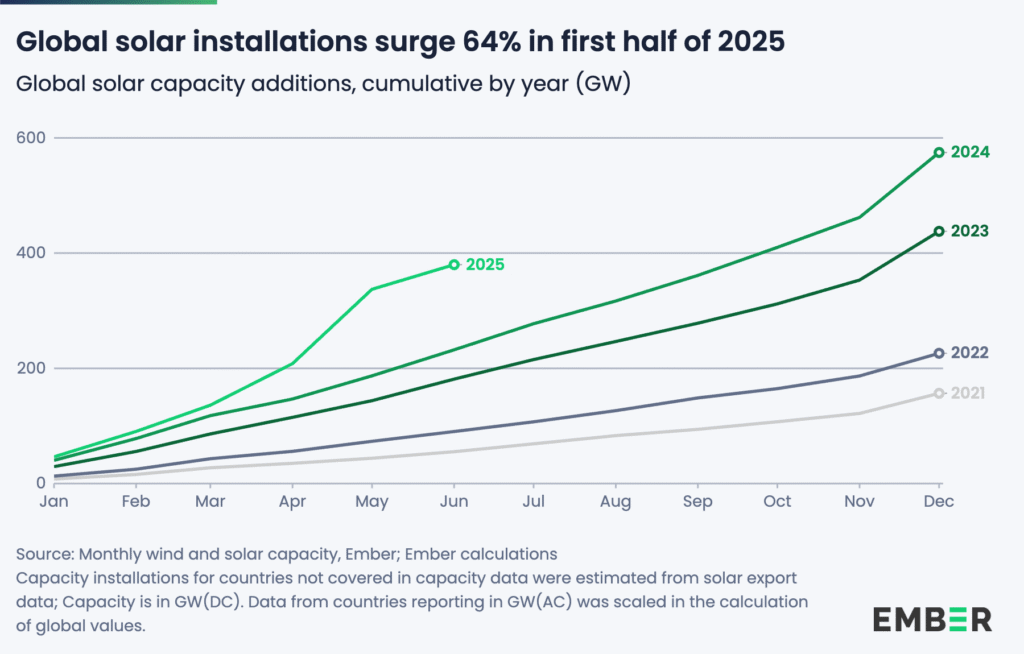India added 24 GW while the US added 21 GW. China added 67% of the global total
Between January and June this year, the world added 380 GW of new solar capacity — a global record, according to data by the London-based think tank Ember. The solar addition was 64% higher than during the same period in 2024, when 232 GW were installed. The data revealed that last year, it took until September for global solar capacity additions to surpass 350 GW, whereas this year, it happened three months earlier.
In terms of new electricity generation, solar has been the faster growing source, primarily due to its rapid pace of expansion. In 2024, global solar output rose by 28% (+469 TWh) compared to 2023, more than any other source.
But the growth is not exactly uniform across countries. China’s solar additions surpass other countries by far. The Asian powerhouse installed more than twice as much solar as the rest of the world.
After China, India added the most solar — topping the US for the first time in solar capacity additions.

Global solar growth accelerating rapidly
Ember’s data showed that India recorded the second-highest installations with 24 GW — a 49% increase over the 16 GW it added in the first half of 2024.
The US followed as a close third, with an addition of 21 GW of solar, which was 4% more than what it added last year.
China added more than double the amount of solar compared to the same period in 2024, making it the clear global leader in renewable energy deployment, according to the data. It accounted for 67% of the global total.

Ember found that the rapid growth of solar was driven partly by energy companies trying to complete renewable projects before new rules on wind and solar compensation came into effect in June 2025.
This may cause a little slowdown in the rest of the year, but the data projections estimate that 2025 will surpass the installations of 2024.
“These latest numbers on solar deployment in 2025 defy gravity, with annual solar installations continuing their sharp rise. In a world of volatile energy markets, solar offers domestically produced power that can be rolled out at record speed to meet growing demand, independent of global fossil fuel supply chains,” said Nicolas Fulghum, senior energy analyst at Ember.
About The Author
You may also like
Renewables are Cutting Down Power Prices Globally: Report
India’s PLI Drives Growth in Solar Manufacturing Sector: Report
Global coal demand growth rate slows down as China shifts to renewable energy: Report
BlackRock plans to invest ₹3,000 crore in Aditya Birla Renewables
In 2025, costs of storing renewables with batteries have fallen to its lowest ever: Report

